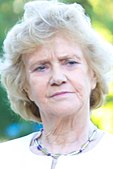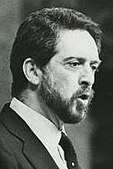1987 Seville City Council election
| |||||||||||||||||||||||||||||||||||||||||||||||||||||||||||||||||||||||||||
All 31 seats in the City Council of Seville 16 seats needed for a majority | |||||||||||||||||||||||||||||||||||||||||||||||||||||||||||||||||||||||||||
|---|---|---|---|---|---|---|---|---|---|---|---|---|---|---|---|---|---|---|---|---|---|---|---|---|---|---|---|---|---|---|---|---|---|---|---|---|---|---|---|---|---|---|---|---|---|---|---|---|---|---|---|---|---|---|---|---|---|---|---|---|---|---|---|---|---|---|---|---|---|---|---|---|---|---|---|
| Opinion polls | |||||||||||||||||||||||||||||||||||||||||||||||||||||||||||||||||||||||||||
| Registered | 478,952 | ||||||||||||||||||||||||||||||||||||||||||||||||||||||||||||||||||||||||||
| Turnout | 293,559 (61.3%) | ||||||||||||||||||||||||||||||||||||||||||||||||||||||||||||||||||||||||||
| |||||||||||||||||||||||||||||||||||||||||||||||||||||||||||||||||||||||||||
| |||||||||||||||||||||||||||||||||||||||||||||||||||||||||||||||||||||||||||
The 1987 Seville City Council election, also the 1987 Seville municipal election, was held on Wednesday, 10 June 1987, to elect the 3rd City Council of the municipality of Seville. All 31 seats in the City Council were up for election. The election was held simultaneously with regional elections in thirteen autonomous communities and local elections all throughout Spain, as well as the 1987 European Parliament election.
Electoral system[]
The City Council of Seville (Spanish: Ayuntamiento de Sevilla) was the top-tier administrative and governing body of the municipality of Seville, composed of the mayor, the government council and the elected plenary assembly.[1][2]
Voting for the local assembly was on the basis of universal suffrage, which comprised all nationals over eighteen, registered in the municipality of Seville and in full enjoyment of their political rights, as well as resident non-nationals whose country of origin allowed Spanish nationals to vote in their own elections by virtue of a treaty. Local councillors were elected using the D'Hondt method and a closed list proportional representation, with an electoral threshold of five percent of valid votes—which included blank ballots—being applied in each local council.[1][2] Councillors were allocated to municipal councils based on the following scale:
| Population | Councillors |
|---|---|
| <250 | 5 |
| 251–1,000 | 7 |
| 1,001–2,000 | 9 |
| 2,001–5,000 | 11 |
| 5,001–10,000 | 13 |
| 10,001–20,000 | 17 |
| 20,001–50,000 | 21 |
| 50,001–100,000 | 25 |
| >100,001 | +1 per each 100,000 inhabitants or fraction +1 if total is an even number |
The mayor was indirectly elected by the plenary assembly. A legal clause required that mayoral candidates earned the vote of an absolute majority of councillors, or else the candidate of the most-voted party in the assembly was to be automatically appointed to the post. In the event of a tie, the appointee would be determined by lot.[1]
The electoral law allowed for parties and federations registered in the interior ministry, coalitions and groupings of electors to present lists of candidates. Parties and federations intending to form a coalition ahead of an election were required to inform the relevant Electoral Commission within ten days of the election call, whereas groupings of electors needed to secure the signature of a determined amount of the electors registered in the municipality for which they were seeking election, disallowing electors from signing for more than one list of candidates. For the case of Seville, as its population was between 300,001 and 1,000,000, at least 5,000 signatures were required.[2]
Opinion polls[]
The table below lists voting intention estimates in reverse chronological order, showing the most recent first and using the dates when the survey fieldwork was done, as opposed to the date of publication. Where the fieldwork dates are unknown, the date of publication is given instead. The highest percentage figure in each polling survey is displayed with its background shaded in the leading party's colour. If a tie ensues, this is applied to the figures with the highest percentages. The "Lead" column on the right shows the percentage-point difference between the parties with the highest percentages in a poll. When available, seat projections determined by the polling organisations are displayed below (or in place of) the percentages in a smaller font; 16 seats were required for an absolute majority in the City Council of Seville.
| Polling firm/Commissioner | Fieldwork date | Sample size | Turnout | Lead | |||||||
|---|---|---|---|---|---|---|---|---|---|---|---|
| 1987 municipal election | 10 Jun 1987 | N/A | 61.3 | 38.7 13 |
– | 9.2 3 |
20.9 7 |
2.4 0 |
24.6 8 |
0.9 0 |
14.1 |
| DYM/Cambio 16 | 4 Jun 1987 | ? | ? | ? 15 |
– | ? 3 |
? 4 |
– | ? 9 |
– | ? |
| Demoscopia/El País[p 1] | 22–26 May 1987 | ? | 70 | 41.4 14/15 |
– | 10.6 3 |
20.0 5/6 |
5.1 1 |
21.9 7 |
1.0 0 |
19.5 |
| Edis/PSOE[p 2] | 11 May 1987 | ? | ? | ? 16 |
– | ? 3 |
? 2/3 |
? 0/1 |
? 8/9 |
– | ? |
| CIM/PDP[c][p 3] | 19 Mar 1987 | ? | ? | 43.8 13/14 |
– | 10.0 3/4 |
14.9 4/5 |
– | 16.9 5/6 |
14.4 4 |
26.9 |
| PSOE[p 4][p 5] | 3 Mar 1987 | 1,200 | ? | ? 12 |
– | ? 5 |
? 6 |
– | ? 8 |
– | ? |
| Metra Seis/PA[p 6] | 11 Jan 1987 | ? | ? | 32.7 | – | 15.4 | 25.8 | 3.2 | 14.0 | – | 6.9 |
| 1986 regional election[3] | 22 Jun 1986 | N/A | 69.8 | 40.8 (14) |
25.5 (8) |
16.8 (5) |
11.8 (4) |
1.6 (0) |
[d] | [d] | 15.3 |
| 1986 general election[4] | 22 Jun 1986 | N/A | 71.8 | 51.3 (19) |
27.4 (10) |
6.7 (2) |
4.8 (0) |
4.4 (0) |
[d] | [d] | 23.9 |
| 1983 municipal election | 8 May 1983 | N/A | 69.9 | 56.2 19 |
29.6 10 |
8.8[e] 3 |
3.0 0 |
1.2 0 |
[d] | [d] | 26.6 |
Results[]
 | ||||||
| Parties and coalitions | Popular vote | Seats | ||||
|---|---|---|---|---|---|---|
| Votes | % | ±pp | Total | +/− | ||
| Spanish Socialist Workers' Party of Andalusia (PSOE–A) | 112,388 | 38.75 | –17.47 | 13 | –6 | |
| People's Alliance (AP)1 | 71,287 | 24.58 | –5.02 | 8 | –2 | |
| Andalusian Party (PA) | 60,479 | 20.85 | +17.88 | 7 | +7 | |
| United Left–Assembly for Andalusia (IU–CA)2 | 26,562 | 9.16 | +0.30 | 3 | +1 | |
| Democratic and Social Centre (CDS) | 6,968 | 2.40 | +1.23 | 0 | ±0 | |
| Workers' Party of Spain–Communist Unity (PTE–UC) | 3,954 | 1.36 | New | 0 | ±0 | |
| People's Democratic Party (PDP) | 2,602 | 0.90 | New | 0 | ±0 | |
| The Greens (LV) | 1,750 | 0.60 | New | 0 | ±0 | |
| Independent Solution (SI) | 561 | 0.19 | New | 0 | ±0 | |
| Spanish Phalanx of the CNSO (FE–JONS) | 515 | 0.18 | New | 0 | ±0 | |
| Andalusian Liberation (LA) | 248 | 0.09 | New | 0 | ±0 | |
| Republican Popular Unity (UPR) | 176 | 0.06 | New | 0 | ±0 | |
| Humanist Platform (PH) | 161 | 0.06 | New | 0 | ±0 | |
| Blank ballots | 2,416 | 0.83 | +0.38 | |||
| Total | 290,067 | 31 | ±0 | |||
| Valid votes | 290,067 | 98.81 | –0.48 | |||
| Invalid votes | 3,492 | 1.19 | +0.48 | |||
| Votes cast / turnout | 293,559 | 61.29 | +1.03 | |||
| Abstentions | 185,393 | 38.71 | –1.03 | |||
| Registered voters | 478,952 | |||||
| Sources[5][6][7] | ||||||
Footnotes:
| ||||||
Notes[]
References[]
- Opinion poll sources
- ^ "Del Valle necesitará apoyos externos para mantenerse en la alcaldía de Sevilla" (PDF). El País (in Spanish). 4 June 1987.
- ^ "El PSOE filtra una encuesta claramente favorable a Manuel del Valle". ABC Sevilla (in Spanish). 11 May 1987.
- ^ "El PDP concurrirá en solitario a las próximas elecciones municipales". ABC Sevilla (in Spanish). 19 March 1987.
- ^ "Peligra la mayoría absoluta socialista en Sevilla". La Vanguardia (in Spanish). 3 March 1987.
- ^ "Con Del Valle el PSOE puede perder la Alcaldía de Sevilla". ABC (in Spanish). 3 March 1987.
- ^ "Rojas Marcos asegura que obtendría el doble de votos que Valle por la Alcaldía". ABC Sevilla (in Spanish). 11 January 1987.
- Other
- ^ a b c "Ley 7/1985, de 2 de abril, Reguladora de las Bases del Régimen Local". Law No. 7 of 2 April 1985. Boletín Oficial del Estado (in Spanish). Retrieved 30 June 2020.
- ^ a b c "Ley Orgánica 5/1985, de 19 de junio, del Régimen Electoral General". Organic Law No. 5 of 19 June 1985. Boletín Oficial del Estado (in Spanish). Retrieved 30 January 2020.
- ^ "Electoral Information System. Parliament of Andalusia. June 1986. Seville Municipality". juntadeandalucia.es (in Spanish). Government of Andalusia. Retrieved 3 April 2018.
- ^ "Electoral Results Consultation. Congress. June 1986. Seville Municipality". Ministry of the Interior (in Spanish). Retrieved 12 November 2017.
- ^ "Local election results, 10 June 1987" (PDF). Central Electoral Commission (in Spanish). Retrieved 16 February 2018.
- ^ "Electoral Results Consultation. Municipal. June 1987. Seville Municipality". Ministry of the Interior (in Spanish). Retrieved 12 November 2017.
- ^ "Elecciones municipales en Sevilla (1979 - 2015)". Historia Electoral.com (in Spanish). Retrieved 30 September 2017.
- 1987 municipal elections in Spain
- Elections in Seville


